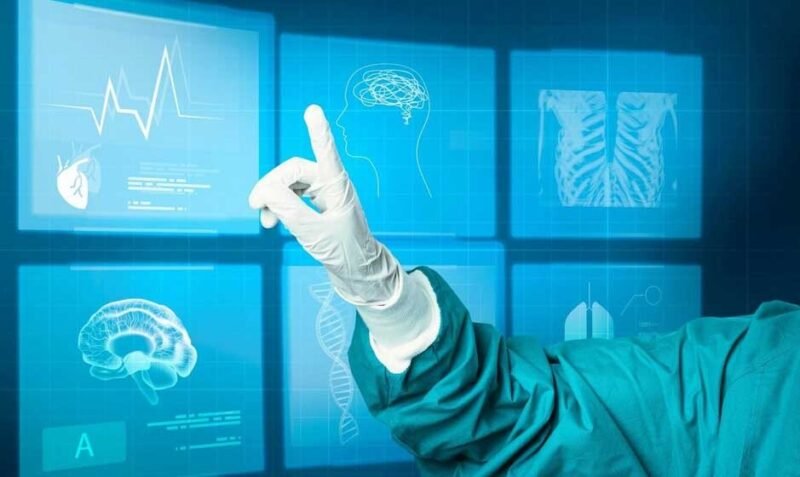The healthcare sector has undergone a digital revolution, with technology reshaping everything from patient care to administrative workflows. At the heart of this transformation? Healthcare software solutions—cutting-edge tools that are streamlining hospital operations, enhancing clinical decision-making, and ultimately delivering better outcomes for patients. These innovations aren’t just changing the industry; they’re redefining what’s possible in modern medicine.
Key Healthcare Software Solutions
The diversity of software solutions in the healthcare field is impressive, ranging from systems that help manage patient records to tools designed to streamline administrative tasks. Here are some of the key types of software that are driving innovation in the industry:
1. Hospital Management System (HMS)
Hospital Management Systems (HMS) are at the forefront of digital transformation in healthcare. These software solutions are designed to streamline and automate the operations of a hospital. An HMS typically integrates various modules that manage everything from patient registration and appointment scheduling to billing and inventory management. For hospitals, implementing an HMS leads to more efficient workflows, reduced administrative burdens, and better resource management. With these systems, medical staff can focus on delivering high-quality care rather than getting bogged down by routine tasks.
2. Electronic Health Records (EHR) Systems
EHR systems are perhaps the most widely used healthcare software. They allow medical professionals to keep a detailed, accurate record of a patient’s medical history, treatment plans, and test results. The shift from paper-based records to EHRs has significantly improved the accuracy and accessibility of patient data. Healthcare providers can quickly access up-to-date patient information, which facilitates better diagnosis and treatment decisions. EHR systems also help in reducing errors, improving coordination among healthcare providers, and ensuring compliance with regulations.
3. Appointment Scheduling Software
Appointment scheduling software is a game-changer in how medical practices manage patient appointments. This software allows patients to book appointments online, reducing wait times and improving the overall patient experience. For healthcare facilities, it provides a user-friendly admin interface to manage doctor schedules, patient reminders, and cancellations. Automated notifications help both patients and healthcare providers stay on track, minimizing missed appointments and improving efficiency.
4. Medical Billing Software
Medical billing software is an essential tool for ensuring accurate financial management in healthcare facilities. This software simplifies the billing process by automating tasks such as generating invoices, processing insurance claims, and tracking payments. It reduces the likelihood of human error and helps healthcare providers maintain financial accuracy. Additionally, it aids in improving the collection of payments and reducing the administrative load on staff.
5. Telemedicine Platforms
Telemedicine software solutions have become increasingly popular, particularly in response to the need for remote healthcare services. These platforms enable doctors to provide consultations to patients via video calls, reducing the need for in-person visits. Telemedicine improves access to healthcare, especially for patients in rural or underserved areas, and allows doctors to manage their time more effectively. These platforms also help reduce overhead costs for hospitals and clinics, as they eliminate the need for physical space and provide more flexibility for both patients and providers.
6. Clinical Decision Support Systems (CDSS)
Clinical Decision Support Systems are software tools that help healthcare providers make better clinical decisions. By analyzing patient data and applying evidence-based guidelines, CDSS software provides recommendations for diagnosis, treatment, and drug prescriptions. These systems help reduce errors, ensure that patients receive the most appropriate care, and improve the overall quality of healthcare delivery. With the integration of artificial intelligence and machine learning, CDSS tools are becoming even more advanced, offering insights that were previously not possible.
7. Health Tracking and Monitoring Apps
Health tracking apps have gained popularity with the rise of wearable devices like smartwatches and fitness trackers. These apps allow patients to monitor their vital signs, physical activity, and overall health. While not strictly healthcare software solutions, these tools provide valuable data that can be shared with healthcare providers for better decision-making. These apps empower patients to take control of their health while offering doctors real-time data to monitor patients’ progress and adjust treatments as necessary.
8. Medical Imaging Software
Medical imaging software allows healthcare providers to visualize diagnostic images such as X-rays, MRIs, and CT scans. These software solutions not only improve the clarity of medical images but also help in analyzing them more efficiently. Advanced imaging software can generate 3D models, helping doctors plan surgeries and other procedures with greater precision. This is particularly beneficial in specialties like orthopedics and dentistry, where visualizing the patient’s anatomy is crucial for successful treatment outcomes.
9. Electronic Prescription Software
E-prescribing software allows doctors to write prescriptions electronically and send them directly to pharmacies. This eliminates the need for handwritten prescriptions, reducing the risk of medication errors and improving the overall efficiency of the prescribing process. E-prescription systems also make it easier to track patients’ medication histories, ensuring that healthcare providers can make informed decisions and avoid potentially harmful drug interactions.
10. Virtual Reality (VR) Training and Simulation
Healthcare professionals must continually refine their skills, and VR training software provides a safe, cost-effective way to practice complex procedures. With VR simulations, doctors, nurses, and medical students can rehearse surgeries, diagnoses, and other tasks in a controlled environment. This type of training helps improve confidence, enhances skill retention, and reduces the risk of errors in real-world scenarios.
The Role of Healthcare Software Solutions in Modern Healthcare
The integration of healthcare software solutions into medical practices and hospitals offers numerous benefits that go beyond simply improving day-to-day operations. These solutions increase operational efficiency, reduce costs, and most importantly, improve patient care. For instance, by automating administrative tasks, medical staff can devote more time to direct patient care. Additionally, real-time access to patient data improves the accuracy of diagnosis and treatment.
Furthermore, healthcare software solutions have proven to be invaluable during public health emergencies. The COVID-19 pandemic highlighted the need for remote healthcare options, efficient data management, and rapid response capabilities. Telemedicine platforms, contact tracing tools, and patient monitoring software played a crucial role in helping healthcare systems adapt to the challenges posed by the pandemic.
How Healthcare Software Solutions Improve Patient Experience
Healthcare software solutions also enhance the patient experience by offering convenience, transparency, and better communication. Features such as online appointment scheduling, automated reminders, and access to medical records make healthcare services more accessible. Patients can track their health progress and communicate with their healthcare providers without the need for in-person visits, which is especially beneficial for those with chronic conditions or those living in remote areas.
Challenges and Considerations
Despite the numerous benefits, the adoption of healthcare software solutions is not without challenges. One of the biggest obstacles is data security. Healthcare data is sensitive, and any breach can have serious consequences. Therefore, healthcare organizations must implement robust security protocols and comply with regulations such as HIPAA in the United States to protect patient privacy.
Another challenge is the integration of various software systems within healthcare organizations. Often, different departments within a hospital or clinic use different software solutions, which can create compatibility issues. Healthcare providers must ensure that their software systems are interoperable to avoid data silos and streamline workflows across departments.
Finally, training healthcare staff to effectively use new software solutions can be time-consuming and costly. However, the long-term benefits of improved patient care, operational efficiency, and cost savings typically outweigh these initial challenges.
Conclusion
Healthcare software solutions are transforming the industry by enhancing patient care, streamlining hospital management, and enabling healthcare providers to operate more efficiently. These solutions are not just about improving technology; they are about making healthcare services more accessible, affordable, and effective. As the healthcare sector continues to evolve, the role of software in shaping its future will only become more significant. By adopting innovative healthcare software solutions, hospitals and clinics can stay ahead of the curve and deliver better care to their patients.









Great blog post.Really looking forward to read more. Great.